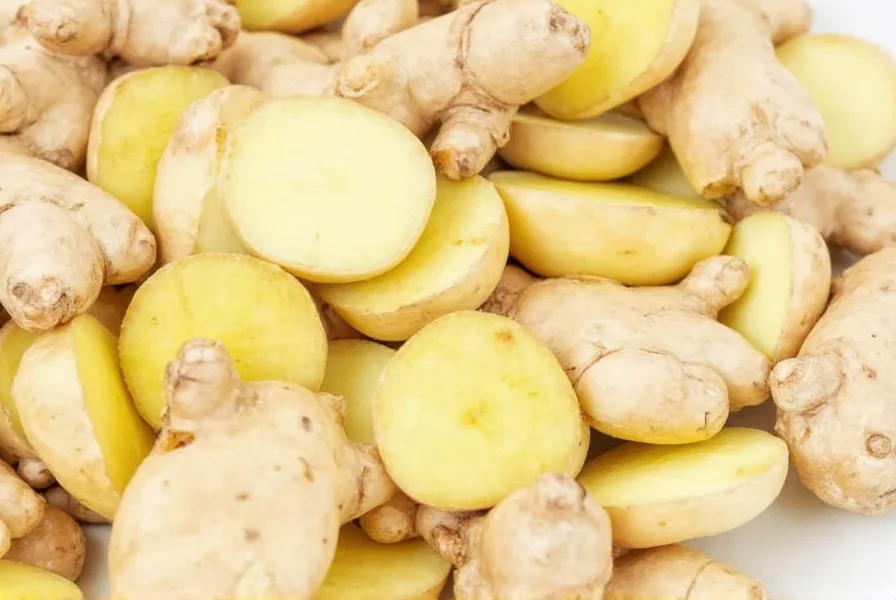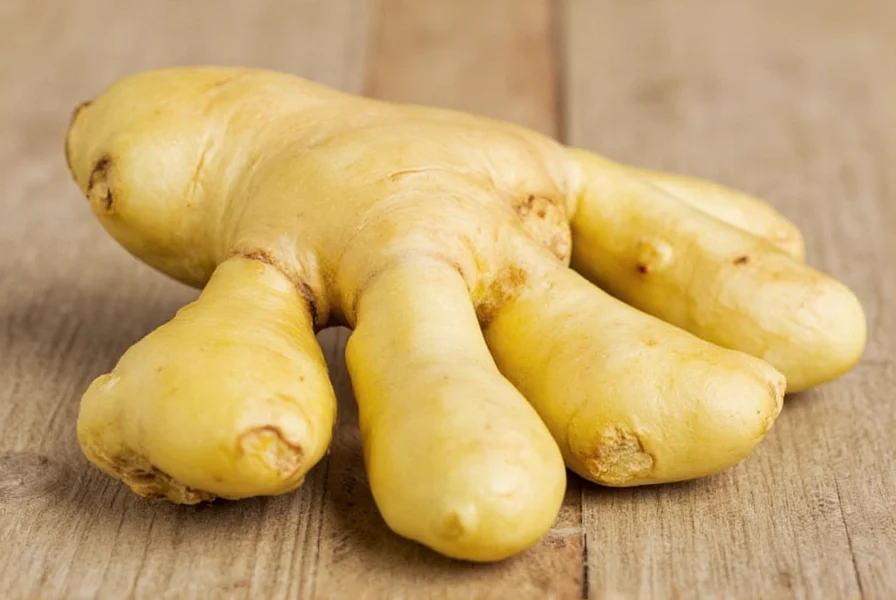Fresh ginger root has been a staple in kitchens and traditional wellness practices for centuries. Unlike its dried counterpart, fresh ginger offers a vibrant, complex flavor profile and higher concentrations of beneficial compounds. Understanding how to properly select, store, and utilize this versatile ingredient can significantly enhance your cooking and potentially support wellness goals.
What Makes Fresh Ginger Root Unique
Botanically classified as a rhizome rather than a root, fresh ginger grows horizontally beneath the soil surface. The part we use contains gingerol, the primary bioactive compound responsible for ginger's characteristic pungency and potential therapeutic properties. Fresh ginger typically contains about 1-3% gingerol by weight, significantly more than dried or powdered forms which lose some volatile compounds during processing.

Selecting the Best Fresh Ginger Root
When choosing fresh ginger at the market, several visual and tactile indicators signal quality:
| Quality Indicator | What to Look For | What to Avoid |
|---|---|---|
| Texture | Firm to the touch with slight elasticity | Soft spots, mushiness, or excessive hardness |
| Appearance | Smooth, taut skin with minimal wrinkles | Excessive wrinkles, shriveling, or visible mold |
| Color | Bright tan to light brown skin | Dull, grayish, or greenish discoloration |
| Moisture | Slightly damp but not wet | Excessively dry or slimy surface |
Smaller ginger pieces often have more concentrated flavor than larger, older roots. Look for pieces with visible 'eyes' or growth nodes, which indicate freshness. The best fresh ginger root should feel heavy for its size, suggesting high moisture content and freshness.
Optimal Storage Methods for Maximum Shelf Life
Proper storage dramatically extends fresh ginger's usability. The ideal storage method depends on your intended usage timeline:
- Short-term (2-3 weeks): Store unpeeled ginger in the refrigerator's crisper drawer inside a paper bag or wrapped in a paper towel inside a resealable container. This method maintains optimal moisture balance.
- Medium-term (1-2 months): Submerge unpeeled ginger in a jar of sherry or vodka in the refrigerator. The alcohol preserves while slightly enhancing flavor.
- Long-term (6+ months): Freeze whole or sliced ginger in an airtight container. Frozen ginger can be grated directly without thawing.
Never store fresh ginger root at room temperature for extended periods, as it quickly loses moisture and develops mold. Avoid plastic bags without ventilation, which trap moisture and accelerate spoilage. When stored properly, fresh ginger maintains its gingerol content and flavor profile significantly longer than commonly believed.
Effective Preparation Techniques
Preparing fresh ginger requires specific techniques to maximize yield and flavor:
- Peeling options: Use the edge of a spoon to gently scrape off skin rather than a peeler, which removes too much edible flesh. The spoon method works particularly well for how to peel fresh ginger root with minimal waste.
- Grating: Freeze ginger briefly for easier grating. Microplane graters extract maximum juice and flavor compared to box graters.
- Slicing: Cut across the fiber direction for tender results in stir-fries and teas.
- Infusing: For ginger tea, lightly crush sliced ginger to release more compounds before steeping.
Nutritional Profile and Potential Benefits
One tablespoon (6g) of freshly grated ginger contains approximately:
- 2 calories
- 0.1g protein
- 0.5g carbohydrates
- 0.1g fiber
- Significant amounts of gingerol, shogaol, and zingerone
Research suggests fresh ginger root may support digestive health and provide antioxidant effects. The compound gingerol has been studied for its potential anti-inflammatory properties. When considering fresh ginger for nausea relief, studies indicate 1-1.5g daily may be beneficial, though individual responses vary. Remember that fresh ginger root nutritional value differs from powdered ginger, with fresh containing higher moisture content and potentially more active compounds.
Culinary Applications Across Cuisines
Fresh ginger's versatility spans global cuisines:
- Asian cooking: Essential in stir-fries, marinades, and broths. Finely minced ginger forms the flavor base for many Chinese and Japanese dishes.
- Indian cuisine: Combined with garlic to create the 'ginger-garlic paste' foundation for curries.
- Baking: Provides bright flavor in gingerbread, cookies, and cakes (use 1 tablespoon fresh = ¼ teaspoon ground).
- Beverages: Creates vibrant ginger tea, cocktails, and fresh juices.
- Preserves: Candied ginger makes a flavorful treat with potential digestive benefits.
When substituting fresh ginger root vs ground ginger, remember that fresh provides a brighter, more complex flavor profile while ground offers more concentrated heat. For most recipes, 1 tablespoon freshly grated ginger equals approximately ¼ teaspoon ground ginger.
Troubleshooting Common Ginger Issues
Even experienced cooks encounter challenges with fresh ginger:
- Bitterness: Overcooking or using too much can create bitterness. Add ginger later in cooking for brighter flavor.
- Fiber strands: Slice across the grain rather than with it to minimize stringy texture.
- Spice level variation: Younger ginger tends to be milder; older roots develop more heat. Adjust quantities accordingly.
- Discoloration: Ginger may turn slightly blue when cooked due to anthocyanins - this is harmless.
Frequently Asked Questions
How long does fresh ginger root last in the refrigerator?
Properly stored unpeeled fresh ginger root maintains quality for 2-3 weeks in the refrigerator when kept in the crisper drawer inside a paper bag or wrapped in a paper towel within a resealable container. Peeled ginger lasts only about one week. For extended storage, freezing is recommended as it preserves both flavor and beneficial compounds.
Can you eat the skin of fresh ginger root?
Yes, the skin of young, fresh ginger is edible and contains additional fiber and nutrients. However, as ginger ages, the skin becomes tougher and may harbor dirt in its crevices. For older ginger or if appearance matters in your dish, peeling is recommended. The spoon-peeling method removes minimal flesh while effectively cleaning the surface.
What's the difference between fresh ginger root and ground ginger?
Fresh ginger root offers a brighter, more complex flavor profile with higher moisture content and potentially more active compounds like gingerol. Ground ginger has a more concentrated, earthy flavor but loses some volatile compounds during processing. In terms of substitution, 1 tablespoon freshly grated ginger equals approximately ¼ teaspoon ground ginger. Fresh ginger works best in dishes where bright flavor is desired, while ground ginger suits baking and spice blends.
How can I tell if fresh ginger has gone bad?
Signs that fresh ginger root has spoiled include soft or mushy spots, visible mold (white, green, or black), a sour or fermented smell, and significant discoloration (grayish or blackened areas). Fresh ginger should feel firm with smooth skin. If only a small portion shows spoilage, you can cut away at least one inch around the affected area and use the remaining portion immediately, but discard ginger with widespread spoilage.
What are the best ways to use fresh ginger for digestive benefits?
For potential digestive benefits, try steeping 1-2 tablespoons of freshly sliced ginger in hot water for 10-15 minutes to make ginger tea. Adding a squeeze of lemon and a small amount of honey can enhance both flavor and potential benefits. Fresh ginger can also be incorporated into meals by adding grated ginger to stir-fries during the last few minutes of cooking or including it in salad dressings. Research suggests that 1-1.5 grams of fresh ginger daily may support digestive comfort, though individual responses vary.











 浙公网安备
33010002000092号
浙公网安备
33010002000092号 浙B2-20120091-4
浙B2-20120091-4